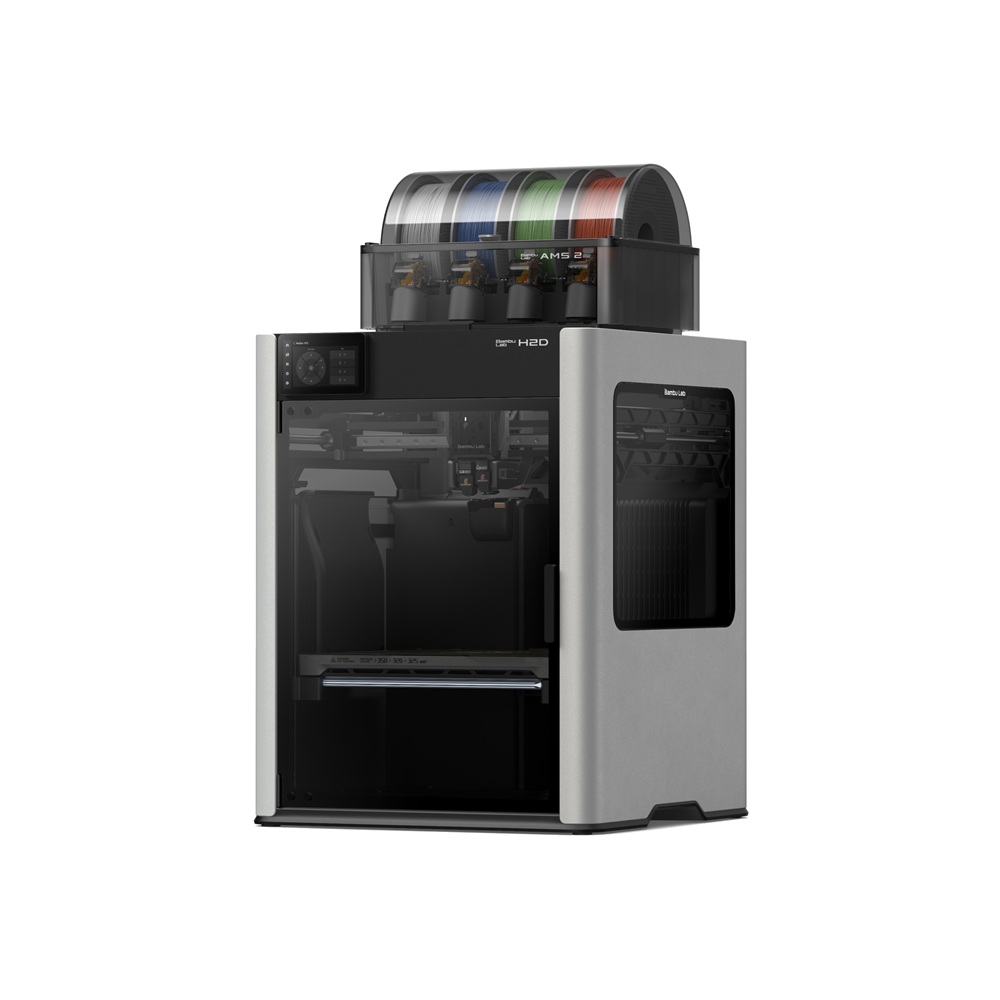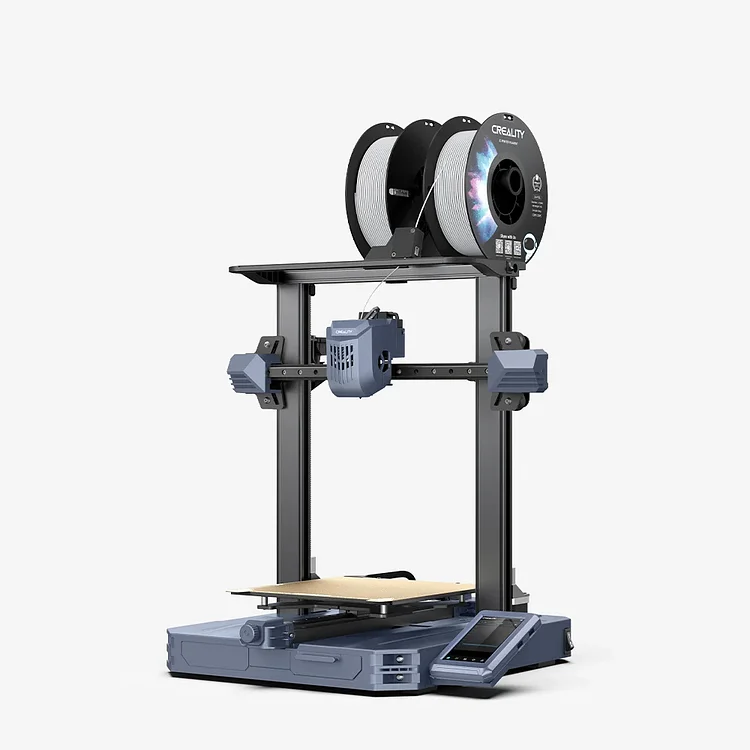Compare H2D vs CR10 SE
Comparison between the best 3D printers
Choose the best 3D printer at the best price. The cheapest 3D printers are here.
Buy a 3D printer here with 3D Fila.
 |
 |
|
| Model | H2D |
CR10 SE |
| Printing Material | Filament | Filament |
| Buy Filament for Bambu Lab H2D | Buy Filament forCreality CR10 SE | |
| Estimated price | $1899,00 | $386,00 |
| Manufacturer | Bambu Lab | Creality |
| Release Year | 2025 | 2023 |
| Print Volume [mm] | 350x320x325 | 220x220x265 |
| Printer Size [mm] | 492x514x626 | 490x470x625 |
| Weight [kg] | 42,3 | 6,9 |
| Power Loss Recovery | YES | NO |
| Enclosed printer | YES | NO |
| Bed Leveling | Automatic | |
| Filament End Sensor | YES | NO |
| Bed type | Heated | |
| Power supply system | Direct Drive | Direct Drive |
| Standard nozzle | 0,4 | 0,4 |
| Maximum Nozzle Temperature [°C] | 350 | 300 |
| Maximum Bed Temperature [°C] | 120 | 110 |
| Maximum printing speed [mm/s] | 600 | 600 |
| Filament holder | YES | YES |
| Camera for supervision | YES | YES |
| Recommended filaments | PLA, PETG, ABS, ASA, TPU, PVA, Nylon (PA) | PLA, PETG, PET, TPU, PA Wood, ABS, ASA, PA, PLA-CF |
| Recommended slicers | Bambu Studio | Creality Print, Cura, Simplify3D, PrusaSlicer, Orca Slice |
| Maximum Resolution [mm] | 0,01 | 0,1 |
| Processor | ||
| Display | Touchscreen 5'' | |
| Power Supply | ||
| Connectivity | Wifi, Bambu bus, Cartão SD | USB, Wifi |
| Operating systems | Windows, Mac, Linux | Windows, Linux, Macbook |
| Date of registration in the system | 2025-03-31 | 2024-07-02 |
| Release date | 2025 | 2023 |
| Extra features | Bambu Labs H2D combines high-speed 3D printing with a chamber heated up to 65 °C, dual extrusion with automatic nozzle switching, an AMS for filament drying and exchange, and AI sensors that detect failures. It offers optional laser and digital cutting capabilities, features intelligent calibration through computer vision, vibration control, enhanced fire safety, and real-time camera monitoring. | The Creality CR10 SE stands out for its printing speed of up to 600 mm/s, easy and intuitive assembly, direct extruder with double gears, hotend with hardened steel nozzle and ceramic heater, automatic leveling with CR-Touch and pressure sensor, and use of Creality OS firmware based on Klipper, with automatic input shaping calibration. It also includes Wi-Fi connectivity, a filament out-of-stock sensor and a robust structure with linear rails on the X and Y axes. |
| Support for multiple colors and materials (AMS and CFS) | YES | NO |
Notes * |
||
| Cost-benefit | 7 / 10 | 7 / 10 |
| Hardware | 8 / 10 | 2.4 / 10 |
| Tela | . | . |
| Print volume | 4 / 10 | 3 / 10 |
| Performance | 5 / 10 | 5 / 10 |
Conclusion |
| In comparing the Bambu Lab H2D and Creality CR10 SE, several key factors highlight the strengths and weaknesses of each printer, particularly when considering their intended user base, features, and price points. The Bambu Lab H2D, while significantly more expensive, offers a comprehensive suite of advanced features designed for high-performance printing. These include a large print volume, automatic bed leveling, an enclosed build chamber, and a robust recovery system in case of power loss. Additionally, the H2D supports multiple materials, boasts higher maximum temperatures for both the nozzle and the bed, and incorporates AI-driven sensors for enhanced printing reliability. Its connectivity options and user interface also cater to a more tech-savvy audience. On the other hand, the Creality CR10 SE provides a very accessible entry point into 3D printing. With a lower price and a respectable set of features, it caters well to hobbyists and those who are new to 3D printing. Although it lacks some of the advanced capabilities found in the H2D, the CR10 SE still offers commendable print speeds and a user-friendly setup, making it a solid choice for beginners. It does, however, have a lower maximum resolution and fewer smart features, which may limit its appeal to more experienced users seeking intricate prints. Ultimately, the choice between the two models will largely depend on the user’s budget and specific printing needs. If advanced features, higher build quality, and greater print versatility are paramount, the H2D justifies its higher price point. Conversely, for those seeking an economical and more straightforward option that still delivers decent results, the CR10 SE remains a reliable and capable alternative. |

